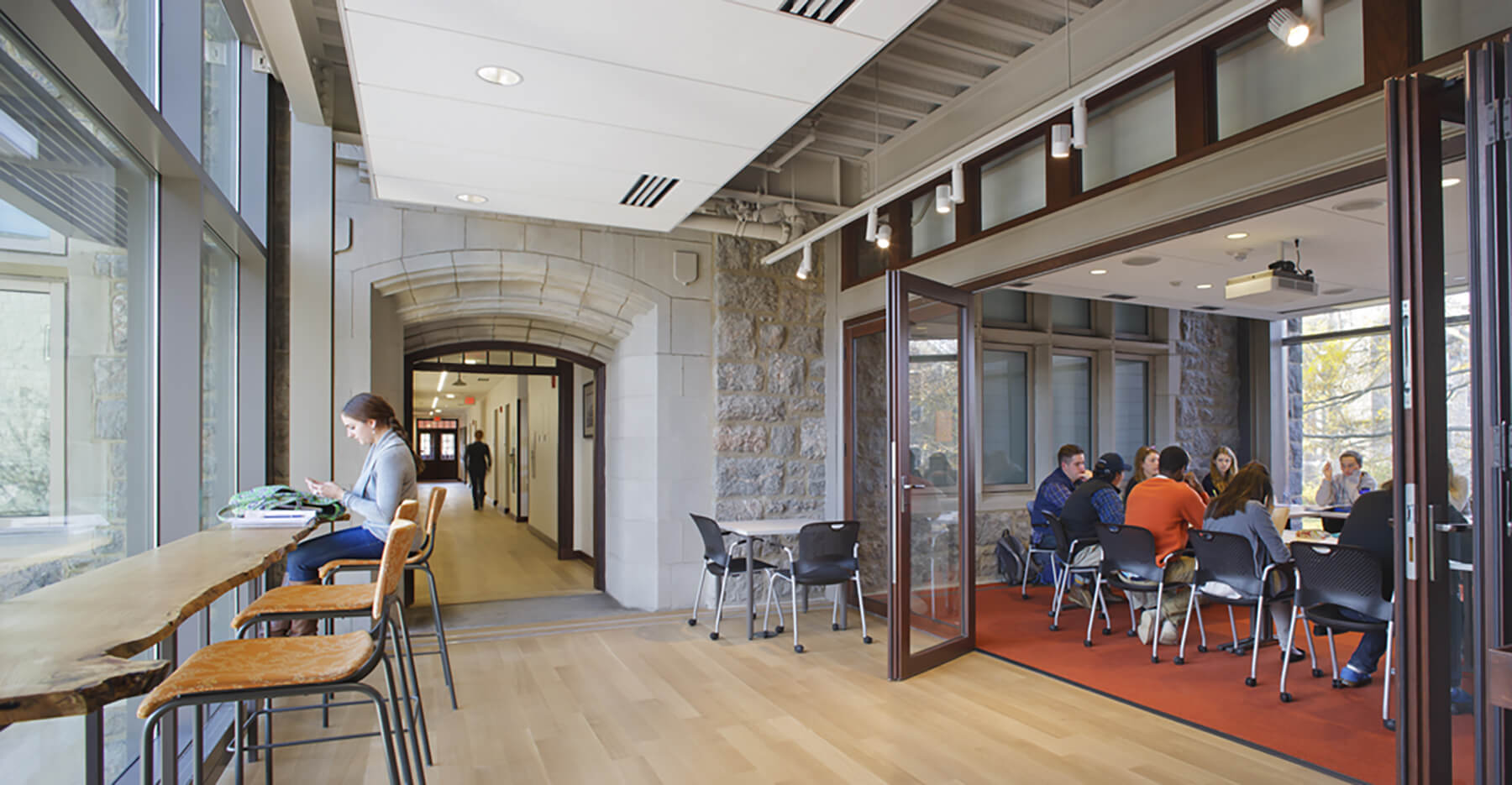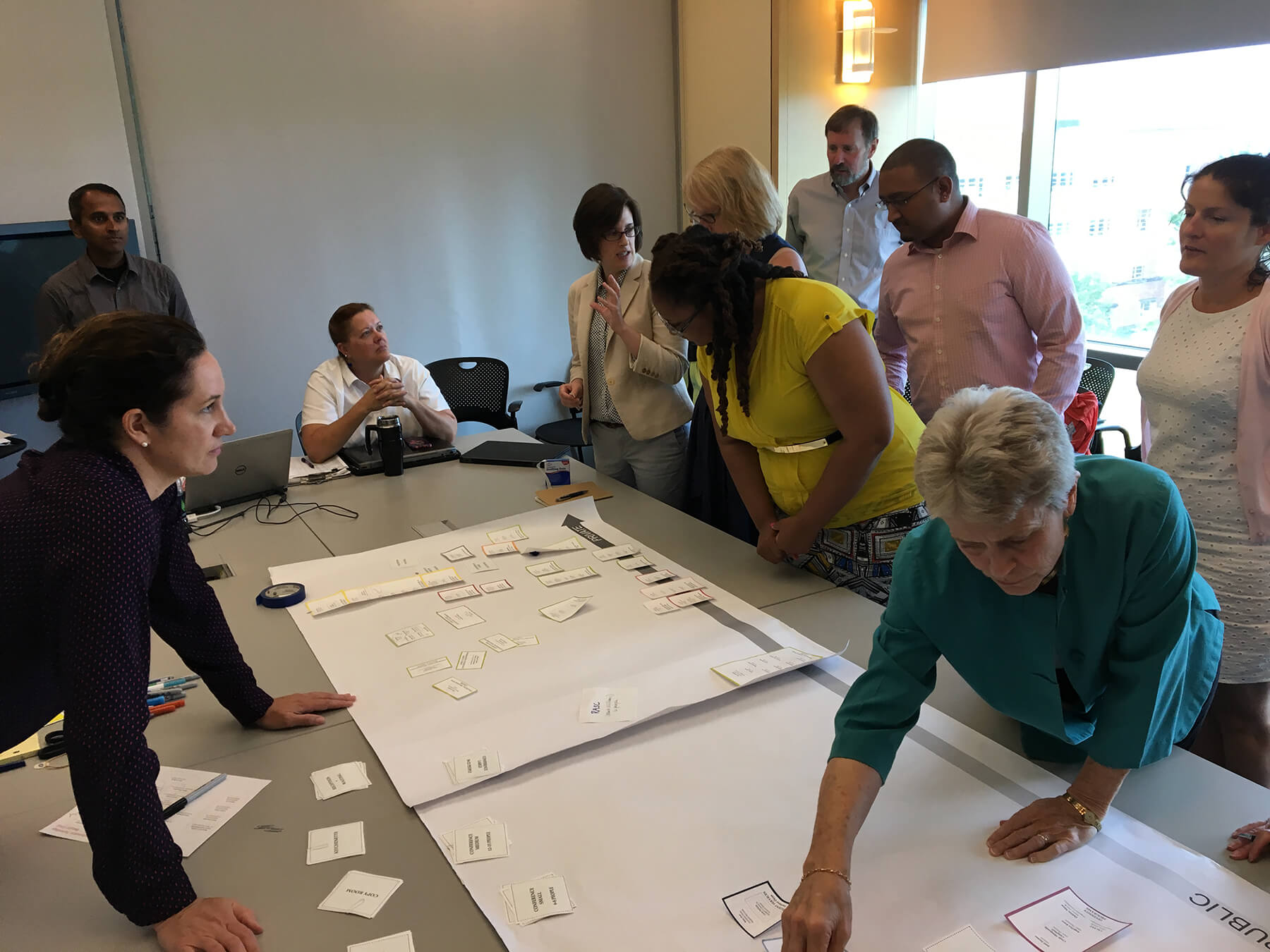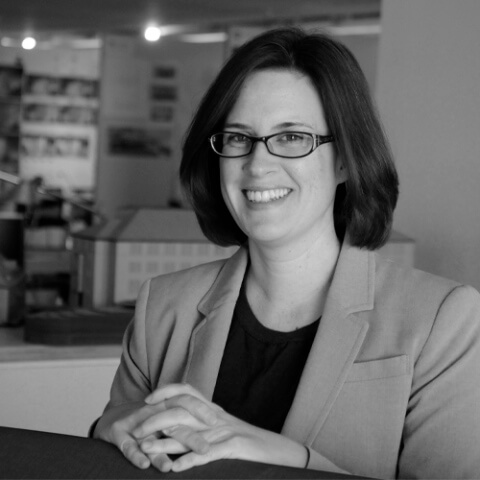A post occupancy process is a great way to inform your design practice. It’s a process in which a designer revisits a project after it has been occupied. Generally, we like to revisit a project after a year of occupancy. That gives the occupants – employees, students, etc. – plenty of time settle in to their space. Additionally, a year of occupancy means we can look at operational data of the building and by that point, the building is operating (more or less) as it was intended.

The typical Post Occupancy Evaluation (POE) at PAYETTE has two phases: the survey and the interview. The order in which they occur varies project to project. Either can inform the other and sometimes the client’s schedule dictates which comes first.

We recently spoke with Kerry Drake, an Associate at PAYETTE, to share more about our POE process.
How closely do you work with your client overall?
PAYETTE works directly with the client on POEs, often a project manager or facilities director, to enable interviews and surveys. Participating in the POE process allows for valuable facetime with building users. In addition to gathering big picture building operation information, they can uncover and resolve small facilities issues such as adding coat hooks or keyboard trays. This can make a world of difference for users and contribute to a transparent, supportive and personal work environment.
How is the data shared?
The POE teams gather both quantitative and qualitative information via building systems data, building tours, user interviews and online surveys. Key points are summarized in an executive report that outlines the design and energy goals of the project. Furthermore, the information can fuel blog posts, in-house knowledge sessions and speaking opportunities.
Are any third party services involved, such as online surveys?
Surveys questions are written by PAYETTE staff and reviewed and contributed to by the client. Historically, surveys are often distributed to users electronically via an online service such as Survey Monkey.. The result will be a highly graphic mapping of responses and a better understanding of use patterns.
How is the data analyzed?
The online survey provides a preliminary analysis for survey response data. This data is reviewed and paired with findings from the building systems information and interviews to create a story on how the building is operating. We use graphic techniques like word clouds and selected quotes to bring the story to life.
What methods do you find usually yield the best results?
The POE teams are ideally composed of staff who were not involved in the original project. Their fresh eyes and neutral standpoint allow them to receive and process comments and data in a fair manner.
In addition, POE’s are meaningful when survey respondents participate in an initial survey that sets benchmarks at the outset of a project. The impact of new or renovated space is clear when results from the two surveys can be compared.
What do you find most difficult?
Both designers and owners sometimes have reservations about POEs, due to concern about negative feedback. However, if the POE is performed tactfully, seemingly negative outcomes can be a great learning experience and a win for future building performance. For example, high-performance buildings sometimes take a year or more to reach optimum balancing, and over time misalignments may fall below the radar. Systems data indicating higher-than-expected energy usage, combined with anecdotal user comments “it’s always too cold in the classroom” can signal a building owner to check set-points and review balancing, ultimately saving both money and energy.
If you could suggest three things to an Architect or Designer looking to carry out a small POE themselves within their design services, what might they be?
- It is easy to make a survey with too many questions, leading to an overwhelming flood of data. Editing a survey to a manageable size (10-20 questions) will be appreciated by the users and the data analysts.
- Find a champion on the Owner’s side who will help you carry out the POE process. They will help you navigate any roadblocks that may lie ahead.
- Recognize that every POE may be different. Sometimes a survey or user interviews may not be appropriate. With each POE, be clear about the end-goal.
What do you think the future looks like for POE and projects that utilize it?
Ultimately our goal is to run a cradle-to-cradle occupancy evaluation of a building; conducting a pre-occupancy evaluation, developing strategic goals that address cultural concerns, ensuring that these goals are met during design, following up with users on a post-occupancy evaluation, and rolling that information into future projects.
Related Posts:
7 Tips for Optimizing a POE Interview
Survey Says: Analyzing the Post-Occupancy Evaluation
POE Results: Breathing New Life into Existing Buildings
Enhancing Design through POEs


